Rocky Planets May Only Get Moons From One Source: Giant Impacts
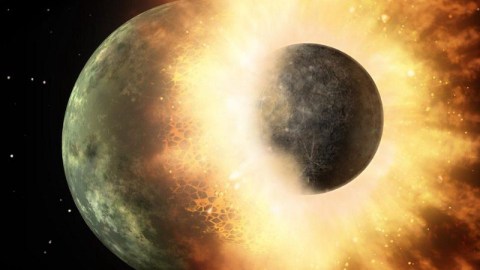
All the planets, asteroids, and Kuiper belt objects out there all point to the same conclusion: it’s giant impacts or no moons at all.
Out of all the rocky planets in our Solar System, Earth is unique for many reasons, including liquid water on its surface, an active core generating a strong magnetic field, and the presence and abundance of life. But astronomically, the most glaring feature of our world is the large companion world we have just 380,000 kilometers away: our Moon. Mercury has no moons; Venus has no moons; Earth has the one giant one; Mars has two tiny, asteroid-sized moons.
For a long time, we had massive amounts of uncertainty surrounding the origins of our Moon. It was only by traveling to the lunar surface and analyzing the composition of the Moon itself that we discovered something incredible: the Moon is made of the same material that Earth is. They must have had a common origin, and the Moon’s surface was once molten. A giant impact is thought to be responsible, and that may be the only way that rocky planets get their moons.
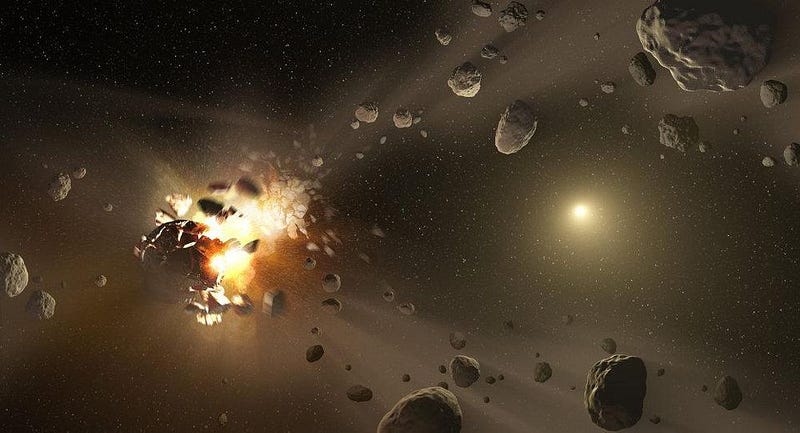
Imagine the Solar System as it might have been in its earliest stages: a central, newly-forming star surrounded by a protoplanetary disk. The star heats up, working to evaporate the material surrounding it, while gravitation works to pull matter in the disk into larger and larger clumps. It quickly becomes a race, as over perhaps tens of millions of years, protoplanets form while the central star boils away the material that hasn’t clumped together fast enough.
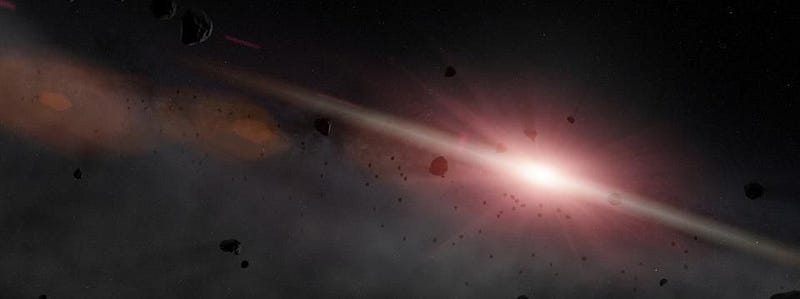
What you wind up with is a few surefire survivors: large, massive planets capable of holding onto a hydrogen and helium-rich gas envelope, surrounded by moons and rings: it’s own mini-planetary system. You also get smaller, less-decisive victors: the rocky and icy objects that become planets and dwarf planets. The only problem is that there are lots of them, some of which share orbits, and they interact, eject each other, and collide.
The evidence that Earth’s moon was formed by a giant impact is overwhelming, and comes from many, varied lines of evidence. The Earth’s spin and the Moon’s orbit around Earth have similar orientations; the Moon has an iron core, just like Earth, except it’s very small; the stable-isotope ratios for the Earth and Moon are identical, while they differ between all the other planets of the Solar System. These all point to a common origin, consistent with a giant impact.
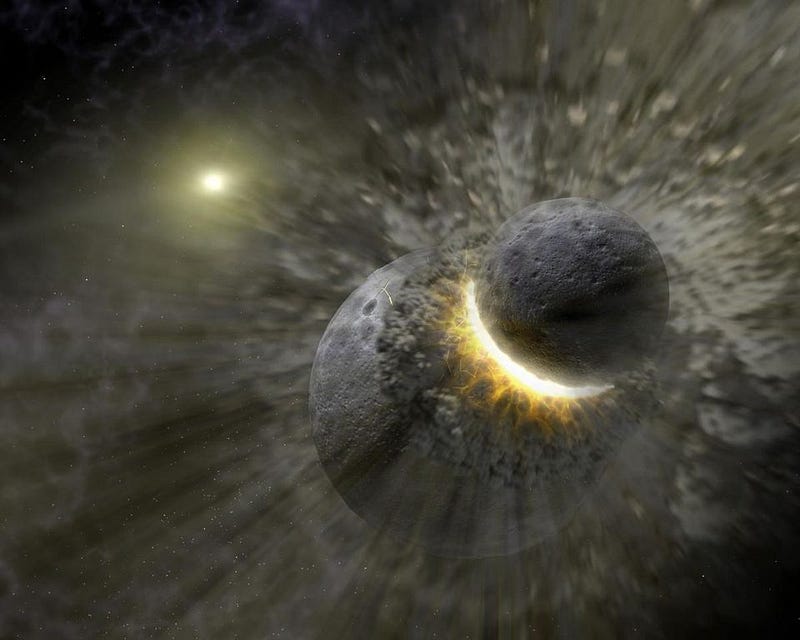
But what’s only recently come to light, as we’ve visited other rocky-and-icy systems that contain moons as well, is that the more we study them, the more their moons appear to have formed by giant impacts as well. It’s a bit of a puzzle, because it doesn’t need to be that way.
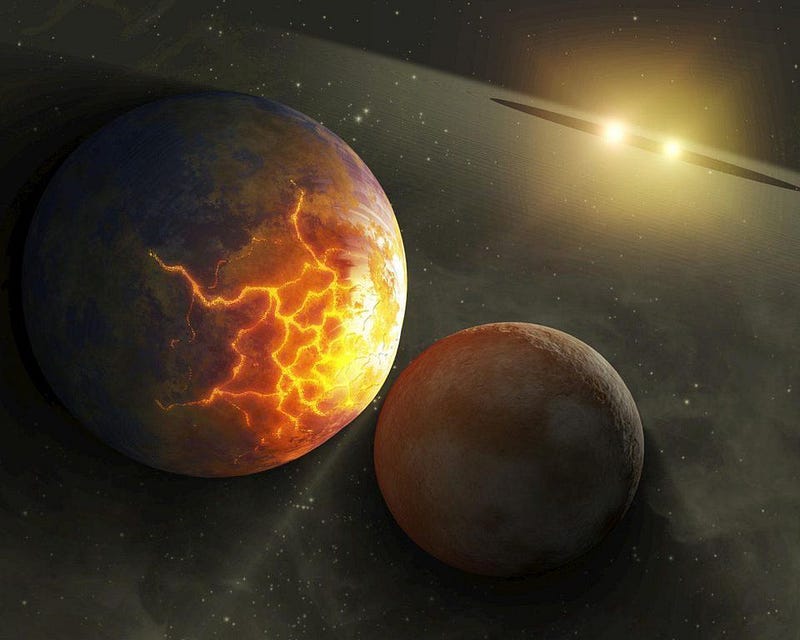
Every large mass has a correspondingly large gravitational well, meaning that objects can have close encounters with it and get captured. Many moons of the gas giants are captured asteroids or Kuiper belt objects, from Saturn’s dark moon Phoebe to Neptune’s enormous Triton. Moons form at a great variety of distances away from the gas giants, and show a similar segregation of elements and isotopes the farther out you go. And as far as the giant planets go, their moons are much smaller than the major planet itself.

Yet this doesn’t seem to be universal at all. In fact, something appears to be fundamentally different between the gas giants and the rocky worlds in terms of their satellites. Captured asteroids and protoplanetary-disk scenarios cannot explain the moons we observe. Not for Earth; not for Mars; not for Pluto.
When it comes to Pluto, it’s been known for a long time that Charon, its giant moon, is so massive that the Pluto-Charon system is better classified as a binary system than as an object with a moon. The center-of-mass lies between the two worlds, well outside of Pluto itself. They have a close orbit; they’re tidally locked; they’re made of the same materials, but Pluto has practically all of the atmosphere.
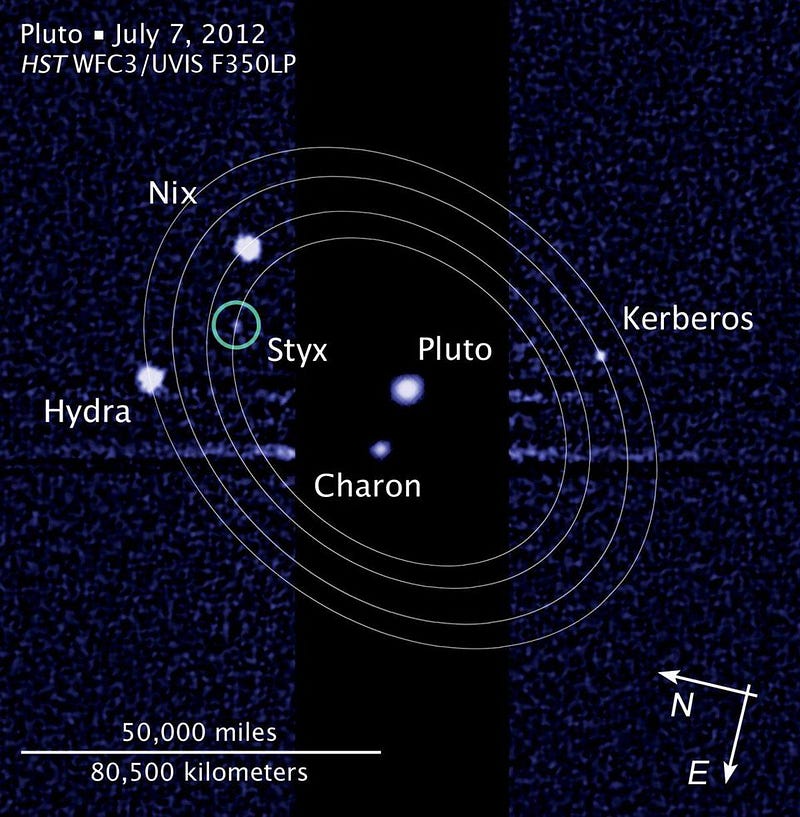
A large collision could easily account for this, while an in situformation scenario cannot, nor can a captured object scenario. The tough part was the prediction that a number of smaller, outer moons should also form if Pluto and Charon resulted from a giant impact. The discoveries of Styx, Nix, Kerberos, and Hydra — and the facts that they’re in the same plane, have resonant orbits at two-to-four times the Pluto-Charon distance, and large angular momenta — lends great weight to the giant impact scenario.
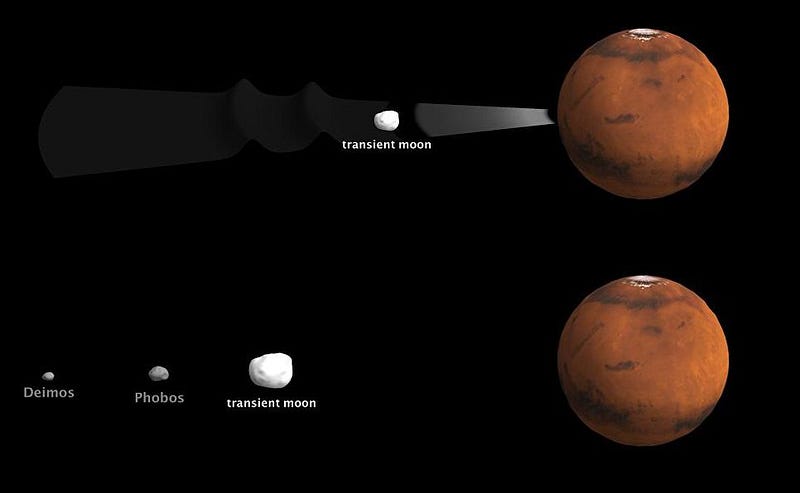
Mars, at first glance, appears different. Its two moons, Phobos and Deimos, appear to be the size of asteroids. But Phobos and Deimos don’t behave like captured asteroids would. They orbit in the same plane as each other, they co-orbit Mars consistent with the rest of the Solar System, their orbits are circular and prograde, and they have similar elemental compositions and densities.
The biggest problem with the giant impact scenario for Mars’ moons is that you can only get two small moons, in simulations, if you also get a third, large, inner moon. A brilliant paper from 2016, however, showed that a large, transient, interior moon is extremely consistent with Mars and its moons, assuming that it fell back to Mars a long time ago. The giant impact scenario, for Mars, Earth, and Pluto, is the leading idea for how these worlds got their moons at all.
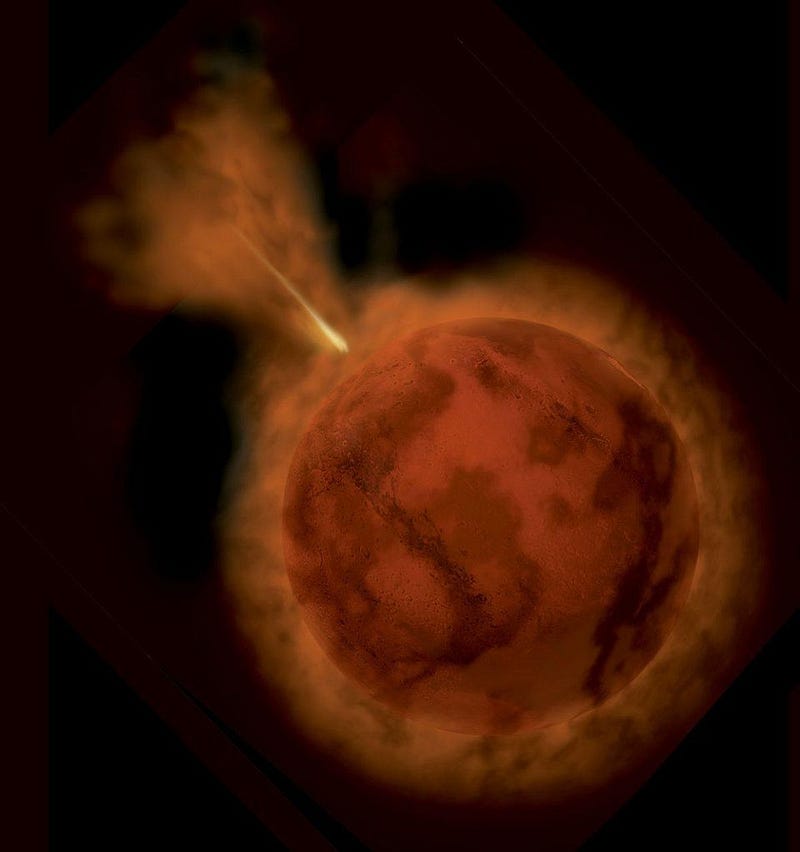
Mercury is battle-scarred on its surface, but has no moons of its own. Venus should get impacted just as often as Earth did in the early stages of the Solar System, but for some reason, perhaps due to its atmosphere or just the history of how it evolved, it doesn’t have a Moon, either. Many asteroids, Kuiper belt objects, and minor planets in general possess moons, with tidal disruptions of loosely-held matter and collisions thought to be the major factors in their creation.
In fact, of all the major bodies that are known to have satellites, including Haumea, Makemake, amd Eris, their sizes and orbital parameters are incredibly consistent with having been created by collisions.
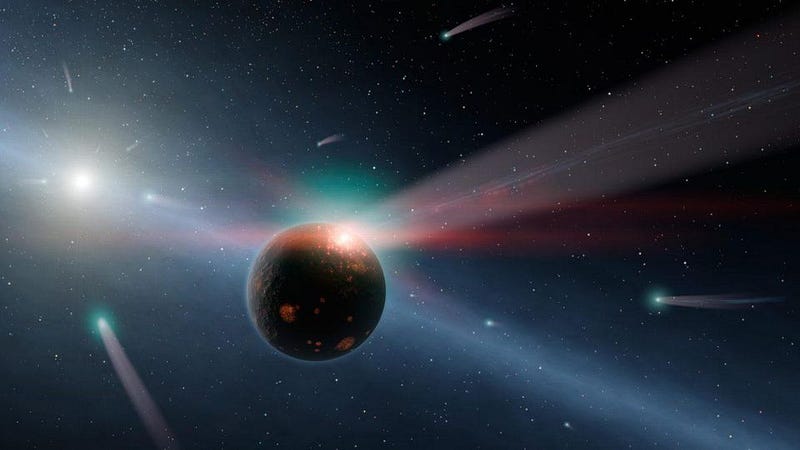
If your gravity rises up to a point where you can pull yourself into hydrostatic equilibrium — a sphere if you’re static, an ellipsoid if you’re rotating — you cannot be pulled apart by tidal forces so easily. But you could, in principle, develop moons through three methods: initial formation from a protoplanetary disk, capturing another passing body through gravitational forces, or from the debris of a large collision.
While the gas giants display moons that appear to have arisen from all three, the rocky planets, including both major and minor planets, appear to obtain moons from collisions alone. It may be the case that the other options are viable but rare, and we simply have yet to discover them. But following the evidence we have today, perhaps Earth’s moon isn’t atypical after all. Until further notice, giant impacts are the only known way for rocky planets to gain moons.
Ethan Siegel is the author of Beyond the Galaxy and Treknology. You can pre-order his third book, currently in development: the Encyclopaedia Cosmologica.





